Re-Villaging a Disconnected World: A Sacred Operating System for Our Time
Mini Essay #2
This is part of a series of stand-alone essays drawn from my forthcoming book, Birthing the Symbiotic Age. Based on my lived experience, each piece explores a practical, spiritually rooted path toward rebuilding trust, community, and culture from the ground up—what I call Symbiotic Culture. While the essays can be read independently, together they weave a pattern of renewal through Love, kinship, and local action.
Introduction: Rediscovering the Village in a Fractured World
We live in an age of hyper connection—and yet, deep disconnection. Technology binds us to global newsfeeds, yet many can’t name their neighbor. Institutions expand, but trust erodes. We scroll past each other, unseen. In this fractured world, something ancient is stirring: a longing not just to be informed, but to belong.
A quiet revolution is rising— heart by heart and block by block—rooted not in protest, but in presence. It’s not about nostalgia or going backward.
It’s about remembering what we never should have lost.
Re-villaging isn’t just about potlucks or local economies.
It is the cultural expression of a deeper transformation—what early Christians called metanoia: a turning of the heart away from isolation and toward communion with God and neighbor. It is a sacred recovery of the relational operating system that once made us whole, rooted in the Ancient Blueprint that calls us to Love God and Love our neighbor as ourselves.
Re-villaging is more than a method, it is a sacred protocol embedded in the fabric of Creation. A way of life capable of scaling trust, rebuilding community, and renewing the world from the ground up.
This longing isn’t hypothetical, it took root in our own community – Reno, Nevada in the mid-2000’s.
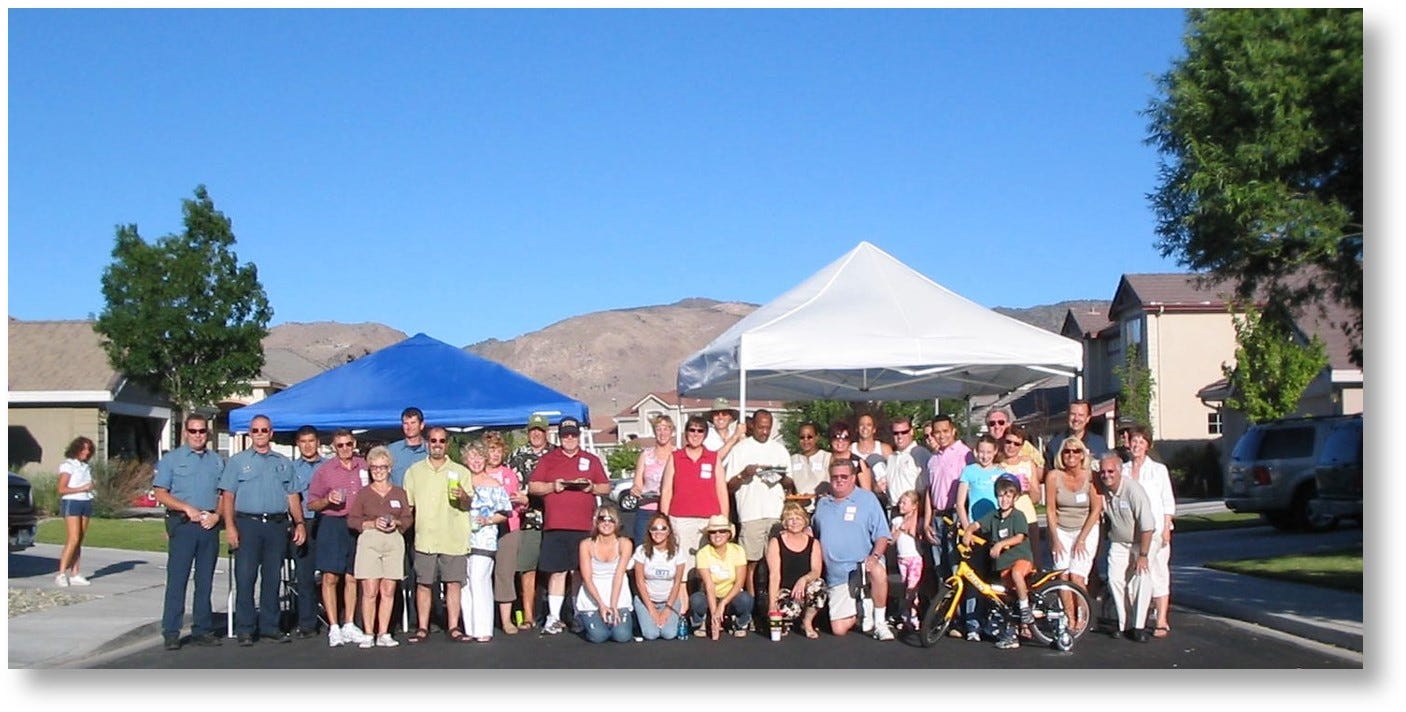
The Longing to Belong: Love Thy Neighbor, Rediscovered
Our path in Reno during the 2000s began not with a strategic plan, but with a question: How do we make “Love Thy Neighbor” real again?
Long before our neighborhood efforts took shape, we had already piloted a regional experiment in symbiotic community-building. We had built community systems before—a Local Living Economy Network and Local Food System Network—that supported civic cooperation without staff, budgets, or formal hierarchies. They functioned more like ecosystems than organizations.
These earlier initiatives served as a living prototype of what I now refer to as Symbiotic Culture DNA.
The mediating structures we created wove together nonprofits, small businesses, faith groups, and citizens around shared purpose and Virtues. That foundation gave us the confidence to go smaller—into neighborhoods—and begin the work of re-villaging.
So, we did.
On Valentine’s Day in 2006, we launched a campaign that asked people to take the Ancient Blueprint seriously—not as an abstraction, but as a practice. The spark caught quickly. Within a year of that meeting, I wrote an opinion piece for the Reno Gazette Journal about the decline of neighborliness.
That article literally ignited a movement. Within two weeks, people throughout Northern Nevada began organizing their own neighbor gatherings, without any organization or infrastructure.
During the next six months, we started to spread the word and organized our first annual region-wide Neighbors Week. Neighbors organized potlucks, shared tools, checked on elders. Local newspapers covered it. TV stations donated airtime. Flyers invited people to simply say hello.
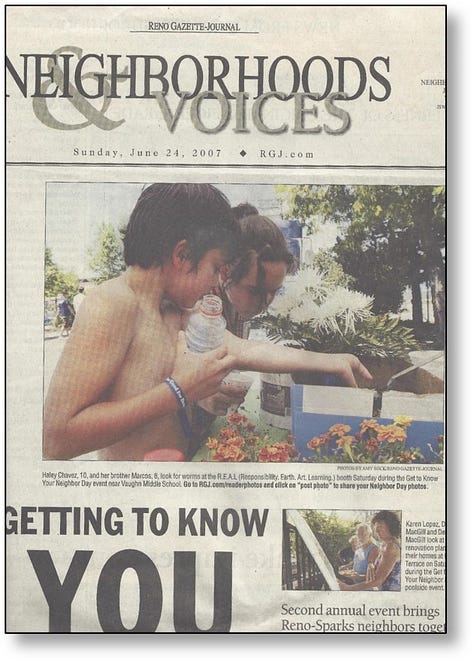
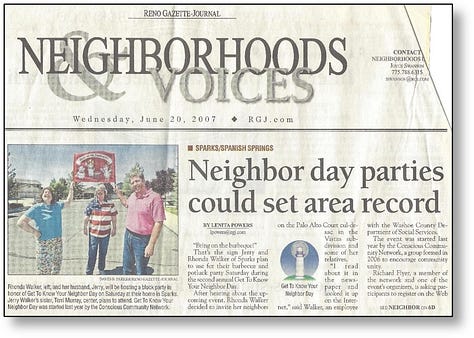
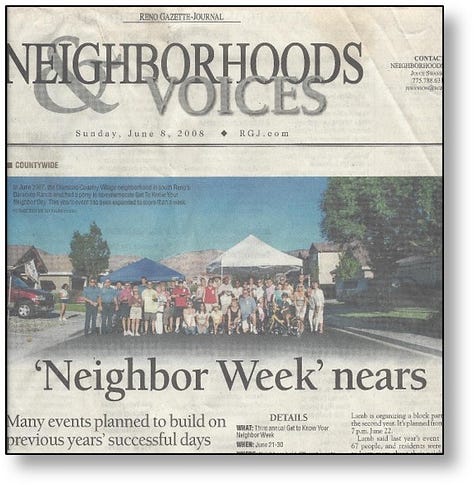
This was “Love God, Love Others” made tangible—through casseroles, rakes, and helping hands.
One article read: “We’ve been to the moon and back but have trouble crossing the street to meet our neighbor.” That line resonated. Within weeks, more spontaneous gatherings bloomed across Reno. Something sacred had been awakened—the longing to belong.
The Village as Operating System
Re-villaging is not a return to quaint nostalgia. It is the recognition that the village is a functional protocol for civilization—an organic system designed to cultivate care, resilience, and mutual benefit at human scale.
And it reflects not just what works—but what is right. The village mirrors Sacred Design, a pattern of relationality woven into the architecture of Creation itself.
Imagine an operating system not written in code, but grounded in Virtue, practiced throughout a community on a daily basis.
Where your neighborhood becomes a relational network, self-organizing around needs and offerings. Where the “apps” are not programs, but potlucks, shared gardens, elder care, and babysitting co-ops. Where data isn’t mined, but trust is grown. Where everyone is both user and contributor.
That’s what we witnessed. This network wasn’t just transactional; it was a tangible expression of “Love thy neighbor,” re-villaging in action.
Our networks didn’t compete with official systems. They complemented them, forming a parallel society not to escape the world, but to help heal it from within.
Like Václav Benda’s Parallel Polis in communist Czechoslovakia, we weren’t trying to control broken systems. We were building an alternative alongside them—rooted in Love, trust, and freedom.
This spirit of complementarity—of forming something alongside, not in opposition to existing structures —brings us back to the neighborhood itself.
From Garage Doors to Gathering Circles
In modern neighborhoods, the garage door has replaced the front porch. As sociologist Robert Putnam documented in Bowling Alone, we’ve traded civic life for private entertainment, intimacy for independence.
But our alienation runs deeper than just architecture.
Instead of gathering with neighbors, we isolate in front of the small screen, obsessing about things we can do little about. We scroll, we argue, we “stand for justice” online, all while rarely knowing the names of the people across the street. In a world of global crises and curated outrage, the neighborhood has become invisible.
This disconnection isn’t just unfortunate, it’s a design failure.
Because the human soul was never meant to thrive in isolation. We’re built for communion, heart-to-heart and face-to-face .
This heartful connection expressed in many ways.
One woman, long isolated, began organizing a block party. A teenager mowed the lawn of a widowed elder. Single moms started babysitting circles. No one forced them to do any of these things.
It was voluntary and reflected the natural desire of people to help one another—a conscious or unconscious recognition that as we receive Divine Love, we want to share it by being in communion with others, for their own sake. That’s why the idea caught on naturally.
As I mentioned, we called this Neighbor Week. Over time, it became something much more: a movement rooted in belonging. More than 65 neighborhoods joined. Local media covered it daily. National magazines like Parade told our story to 40 million readers.
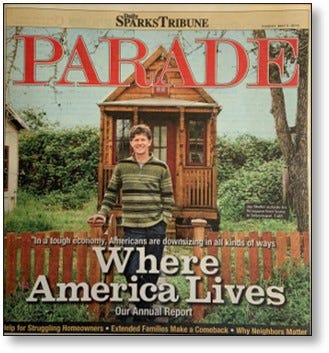
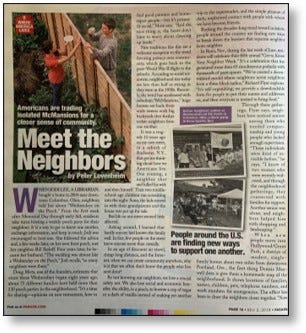
But none of that mattered as much as the unseen moments: a meal shared, a heart opened, a hand offered, and the food from backyard farms shared in the neighborhood.
This wasn’t charity. It was kinship. And in that kinship, something deeper stirred: a recovery of the relational worldview that stands in stark contrast to the mechanistic and individualistic paradigm that dominates modern life.
What we’ve come to call Symbiotic Kinship is the heart and soul of re-villaging.
The Sacred Engine of Kinship
What made this work wasn’t so much new systems and structures, but the Spirit that created and fueled them.
Behind every successful gathering was something deeper than logistics—a living current of Love. Not sentimental Love, but agape: self-giving, generative, transcendent. This was the same power that animated the early Christians, Gandhi’s satyagraha, and Dr. Ari’s Sarvodaya movement in Sri Lanka. It was Divine Love made practical.
We didn’t preach sermons—we became them. We didn’t recruit—we invited. We didn’t push values, we embodied them.
We noticed a fractal pattern emerging; wherever Love took root, kinship followed. These neighborhoods became “caring circles,” decentralized and self-directed, yet spiritually aligned without doctrine or dogma. Our networks weren’t run by agencies or grants, but by people grounded in Virtue.
These small acts were more than kind gestures. They were cultural code—expressions of Virtue that formed the deep infrastructure of a new society.
That Love, once lived communally, gave birth to something deeper still—networks of resilience. These circles of kinship didn’t just make us feel connected—they prepared us for a world in crisis.
The Ark We Built Together
Even as contemporary society became more polarized and impersonal, our neighbor-to-neighbor trust deepened, and networks expanded into something even more robust: systems of shared resilience.
We called them Community Arks: neighborhood-scale networks of mutual aid, food sharing, emergency response, and spiritual care.
No top-down agency could have done what we did. When we discovered that 10,000 seniors in our region were living in isolation, local institutions shrugged: “not enough money or staff.” Our network didn’t need staff. We had real people – neighbors – to pick up the slack.
Through informal gatherings, teens delivered groceries, elders mentored youth, gardeners swapped surplus, and compassion rippled outward.
Instead of relying on the government or formal social services, neighbors took direct action—this is what revillaging looks like in practice. Where the “Titanic” bureaucracies and institutions were failing, the floating Ark was the lifeboat.
The Good Samaritan and the Ancient Blueprint
What we witnessed in our neighborhood gatherings wasn’t new—it was an ancient pattern re-emerging. Beneath the potlucks and block parties was a living echo of the early Christian communities who made Love tangible, crossing tribal lines to care for friend and stranger alike, practicing hospitality and mercy towards all.
Jesus captured this ethic in the Parable of the Good Samaritan.
When asked, “Who is my neighbor?” he answered with a story: not about religious belief, but about Love in action. The one who stopped to help was not the priest or Levite, but the outsider—the Samaritan—who showed compassion beyond tribes and across boundaries.
This, Jesus said, is a true neighbor.
Early Christians took this to heart. They didn’t seek to reform the Roman Empire from the top down, they created a countercultural society alongside it. Instead of resisting evil by force, they multiplied the good. They didn’t need to just preach the gospel; they were living examples.
This was the pattern we saw emerging in our own networks. Teens helping elders. Strangers becoming kin. A spirituality that transcended beliefs and manifested in acts of service. It reminded us: The Ancient Blueprint isn’t some abstract idea; it’s a tried-and-true template that works.
We don’t need a new model for re-villaging. We just need to embody and animate what has always been true—locally, humbly, together.
As G.K. Chesterton wrote, “The Christian ideal has not been tried and found wanting. It has been found difficult; and left untried.”
Re-Villaging the World, One Street at a Time
As I wrote earlier, the village is where we cultivate care, resilience, and mutual benefit at a human scale. What we discovered in Reno is that the re-villaging so many of us long for in this materialistic, polarized society is not a new invention—it’s the reawakening of an ancient pattern.
From early Christian communities to Gandhi’s self-rule villages to Dr. Ariyaratne’s Sarvodaya movement in Sri Lanka, the Blueprint has always been there—patiently waiting to be lived.
The message was never “get people to believe what you believe.” It was: Love your neighbor as yourself. Serve without agenda. That’s how we begin to “re-grow the garden” from the grassroots up.
Yet even with this clarity, old mindsets within the Culture of Separation surfaced.
While organizing the Reno networks, a small group of pastors told me they’d only participate if allowed to recruit. They were still thinking in terms of “market share,” as if community were a competition.
Re-villaging isn’t about conversion—it’s about compassion and collaboration.
At the same time, some of the more secular or political participants questioned why we weren’t taking public stances—on war, elections, or climate change. A few even suggested using our neighbor-to-neighbor work to push those agendas.
But we were taking a stand on the root issue: the Culture of Separation. Rather than fight symptoms, we built parallel ecosystems of belonging.
What may have seemed like a small act—knocking on a door, organizing a potluck, helping an elder—was actually part of something much bigger.
As I describe throughout this book, re-villaging is the second step in a five-stage process of building a local, parallel society, culture, and economy. Whether at the level of family, block, neighborhood, organization, or region, these relational acts weave the hidden infrastructure of trust.
That trust is the essential foundation for any true “village”—one that not only heals disconnection but also lays the scaffolding for a new world, grounded in Sacred Design and Symbiotic Culture DNA.
This is how we grow a new society from the inside out: through Love-infused economics, locally trusted networks, and virtue-based civic ecosystems.
This is Symbiotic Kinship made visible.
Conclusion: The Kingdom of Heaven On the Street Where You Live
When we have our focus on world problems, they feel overwhelming, and we may feel powerless. And that brings us to a key lesson we learned in our re-villaging experiment in Reno.
Start where you are.
Transforming society from a Culture of Separation to a Culture of Connection begins with a conscious, loving, individual act. We may not be in a formal position of leadership – as a politician, media influencer, corporate executive or even non-profit leader. But we all can be informal leaders who lead by example.
Every one of us has a front door, a street we live on, neighbors and a neighborhood. And that is where the miracle begins.
Re-villaging doesn’t require permission. It begins with presence.
Walk out of your door, and walk down the street. Smile. Say hello. Organize a potluck. Offer help. Share a backyard harvest. Invite people into a circle of care. In every neighborhood, hidden gifts are waiting to be discovered, “frozen assets” that when liberated add to wealth and wellbeing. In this simple way, every block contains seeds of a new civilization.
This is how the Kingdom of God grows—not only in cathedrals or capitals, but in gardens and kitchens, cul-de-sacs and stoops, where strangers become neighbors and neighbors become kin.
As the prophet Micah said:
“What does the Lord require of you but to act justly, to Love mercy, and to walk humbly with your God?”
That walk is re-villaging—humble, daily, sacred.
The protocol is already written. The design is Divine. The blueprint is ancient. The fuel is Love. The place to begin?
On the street where you live!
Thank you for reading. Please reply to this email if you want to connect with me directly.
Symbiotic Culture Background:
Mini-Essay #1:
The Original Protocol Was Love: Building a Networked Civilization from the Ground Up
Building a Parallel Society
Living in Truth: Building a Parallel Polis Within a Spiritually Hostile Regime
Frequently Asked Questions:
FAQ #1: The Symbiotic Age Has Begun—What If Love Was the Blueprint for Society?
FAQ #2: The Symbiotic Age Is Taking Root—Who’s Already Living It Without Knowing?


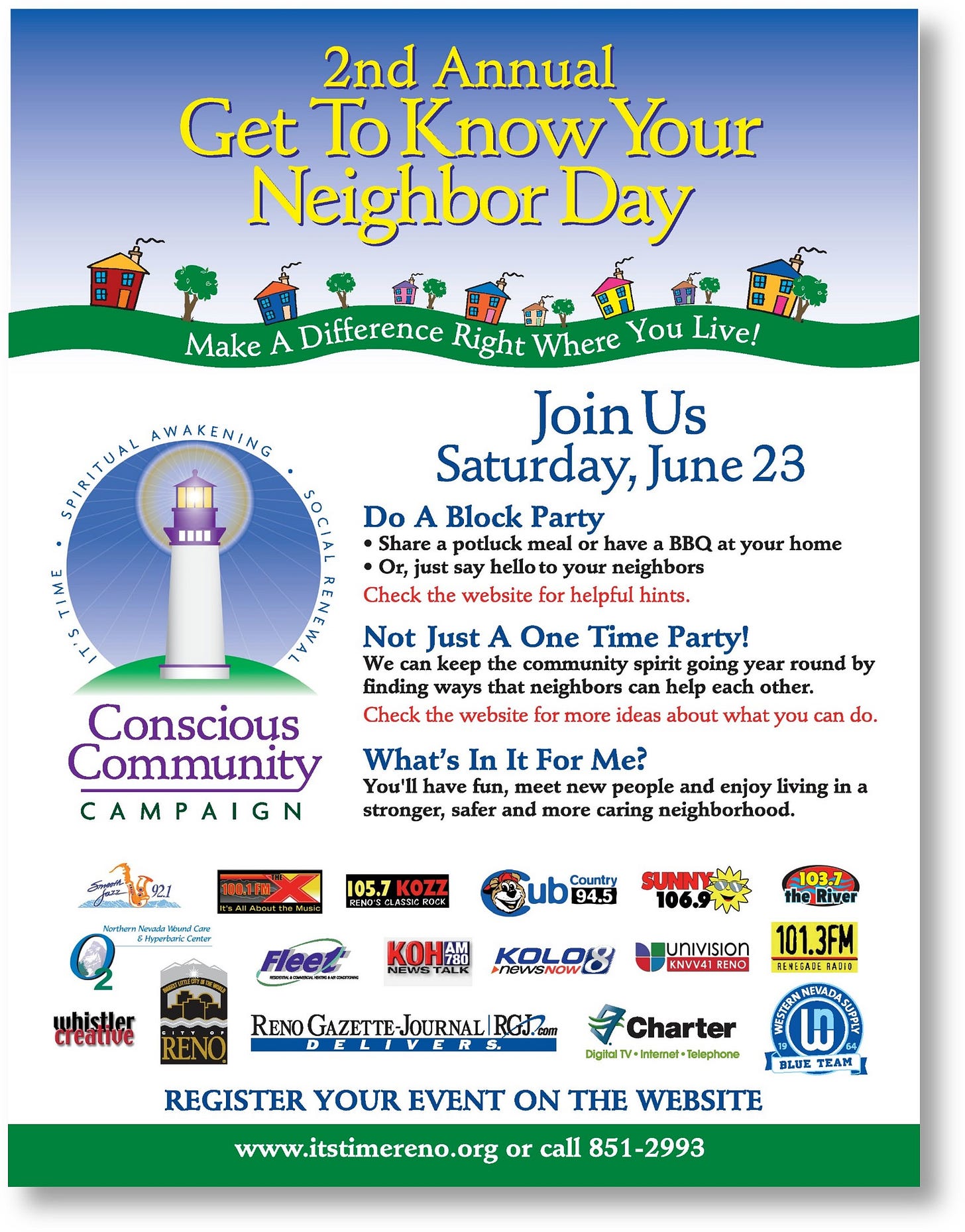
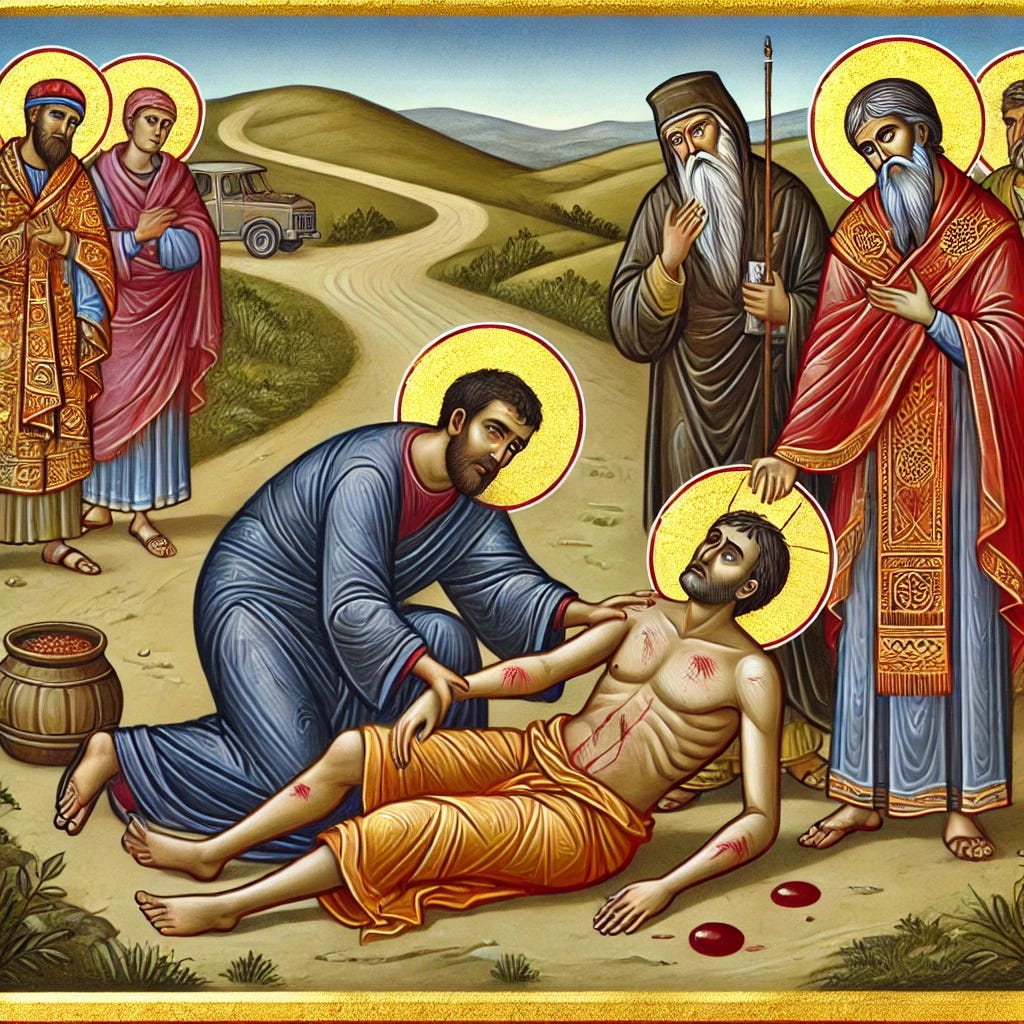
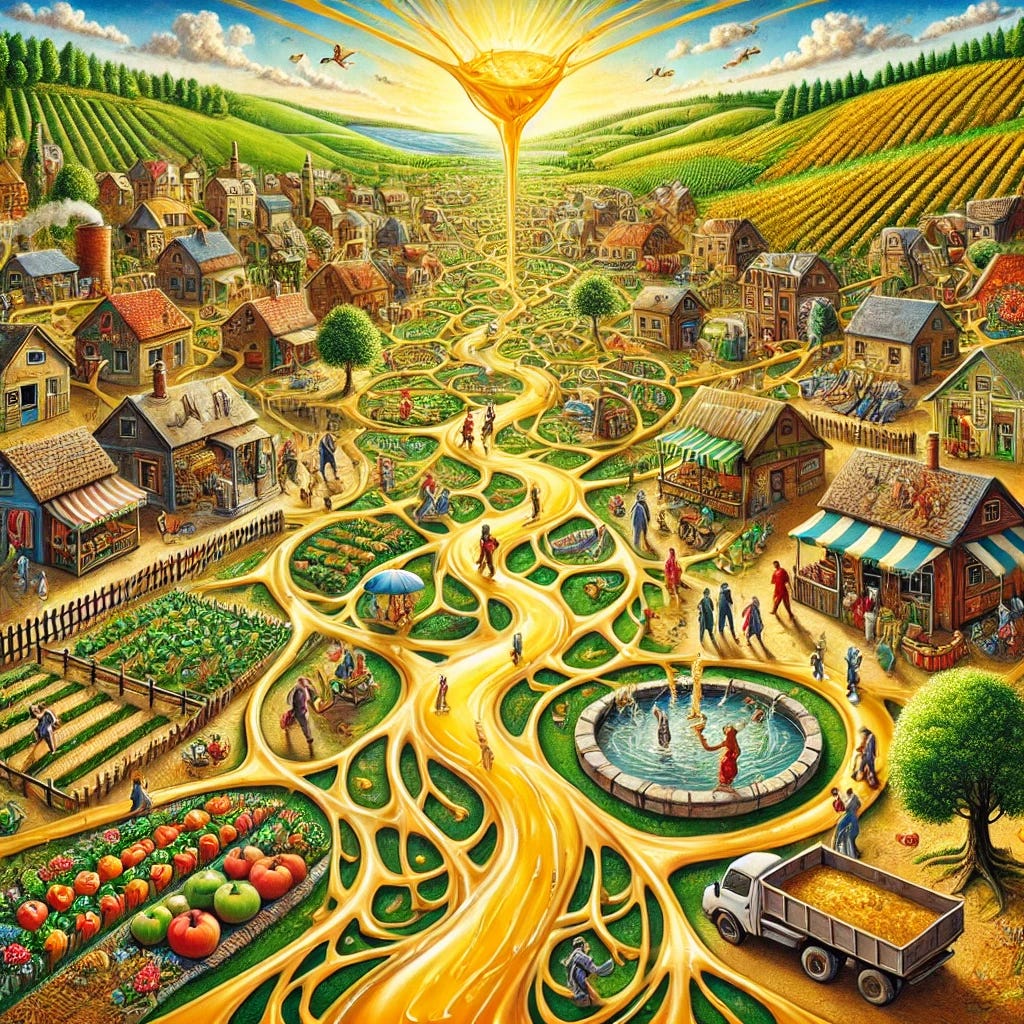
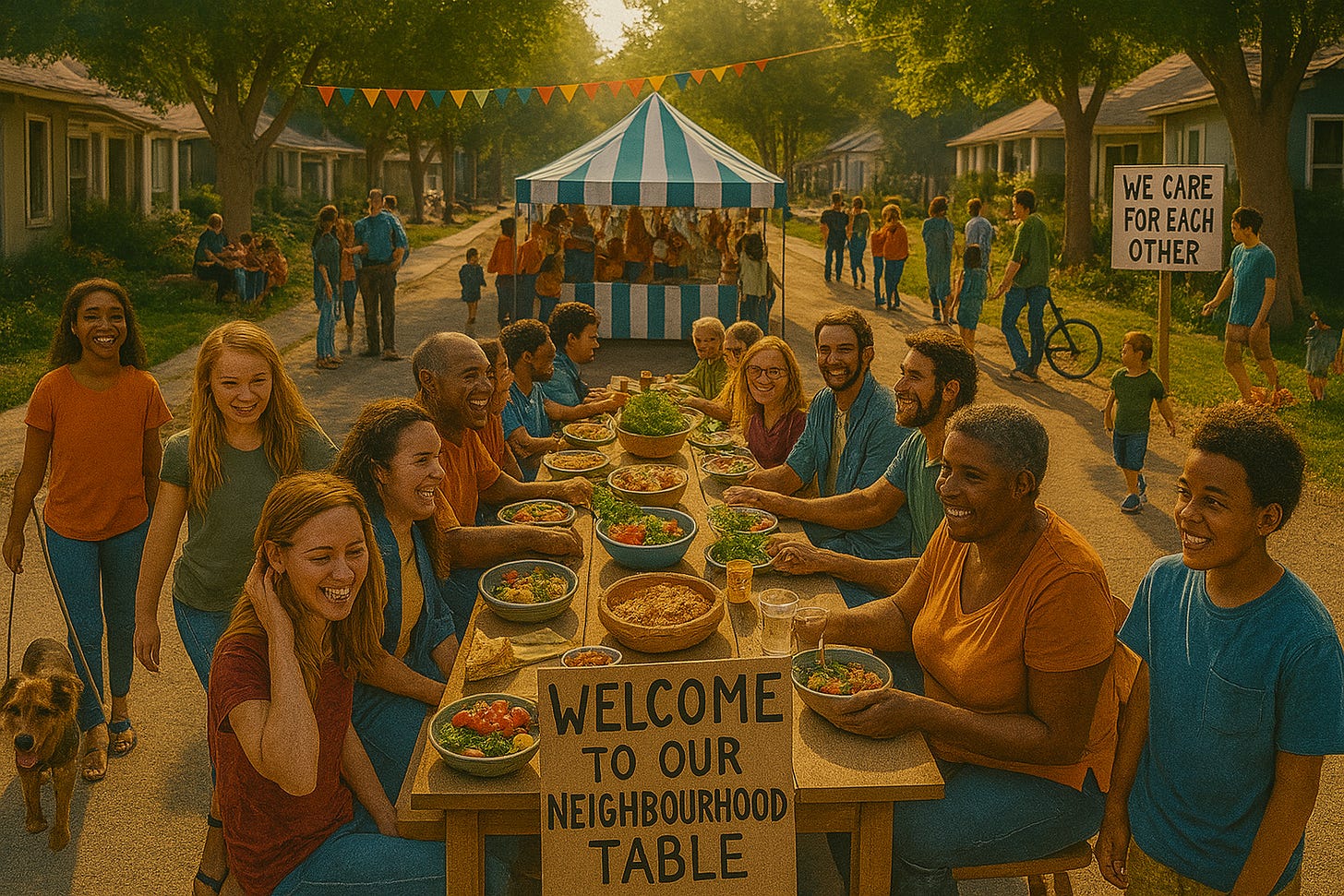
Start where you are is such a humble yet radical call to reclaim belonging. Thank you for this beautiful article!
I would also love to hear your thoughts on an app I am working on, that I hope will help people easily check up on each other.
I left the link to it inbox, when you have time, please check it out.
Haha you're speaking our language here, Richard!! Yes, 100% to re-villaging our neighborhoods. "The Kingdom of Heaven On the Street Where You Live" - yaas!!